#30 October 1766
Explore tagged Tumblr posts
Text












The St. Paul’s Chapel in New York City was consecrated on October 30, 1766.
#St. Paul’s Chapel#consecrated#30 October 1766#Lower Manhattan#travel#summer 2013#2009#New York City#architecture#Thomas McBean#USA#Peter Harrison#Georgian#interior#exterior#original photography#vacation#cityscape#organ#209 Broadway#The Little Chapel That Stood#bell#One World Trade Center#tourist attraction#landmark#cemetery#US history#anniversary
2 notes
·
View notes
Text
Meet the Joneses
Alright! so, lets do a line up, this is a comprehensive list of who is who, how old, and when they were born, and after this post we will be doing a bit of a deep dive into how the states work vs the nations and what that means for us. Now without further ado, time to list the little gremlins -Karla
O13 States (eldest)
Delaware: Stellen D. Jones: January 7th, 1758 Age: 29
Pennsylvania: Karla P. Jones: July 12th, 1758 Age: 29
New jersey: Lorenzo J. Jones: October 18th, 1758 Age: 29
Georgia: Monika G. Jones: January 2nd, 1760 age: 28
Connecticut: Nadia C. Jones: March, 9th, 1760 age: 28
Massachusetts: Cassandra M. Jones: July 18th, 1760 age: 28
Maryland: Marilyn Mary Jones: April 28th, 1762 age: 27
North Carolina: Gavina C. Jones: May 23rd, 1762 age: 27
South Carolina: Fianna C. Jones: May 23rd, 1762 age: 27
New Hampshire: Liepa H. Jones: December 2nd, 1762 age: 27
Virginia: Elise V. Jones: March 25th, 1764 age: 26
West Virginia: Lana V. Jones: March 25th, 1764 age: 26
New York: Felix Y. Jones: July 26th, 1764 age: 26
Rhode Island: Mia R. Jones: October 29th, 1764 age: 26
OG 13 State Capitals
D.C: Logan C. Jones: July 16, 1766 age: 25
Dover: Kustaa D. Jones: May 4th, 1766 Age:25
Harrisburg: Alexander H. Jones: February 24th, 1768 age: 24
Trenton: Eren T. Jones: June 27th, 1768 age: 24
Atlanta: Marie A. Jones: August 16th, 1768 age: 24
Annapolis: Rosalie A. Jones: January 19th, 1770 age: 23
Boston: Sorina B. Jones: June 15th, 1770 Age: 23
Hartford: Rytas H. Jones: September 23, 1770 age: 23
Columbia: Merlin C. Jones: May 7th, 1772 age: 22
Raleigh: Viktor R. Jones: October 7th, 1772 age: 22
Concord:Dorota C. Jones: December 12th, 1772 age: 22
Albany: Chiara A. Jones: April 7th, 1774 age: 21
Richmond: Jakob R. Jones: October 21st, 1774 age: 21
Providence: Estevo P. Jones: May 17th, 1776 age: 20
Montpelier: Eiro M. Jones: October 8th, 1776 age: 20
Younger States
Vermont: Dominik V. Jones: March 4th, 1783 age: 19
Kentucky: Olivia K. Jones: May 1st, 1783 age: 19
Tennessee: Mariel T. Jones: March 7th, 1784 age: 18
Ohio: Noah O. Jones: July 17th, 1784 age: 18
Louisiana: Claire L. Jones: April 30, 1786 age: 17
Indiana: Aiyla I. Jones: June 11, 1786 age: 17
Mississippi: Alice M. Jones: December 10th, 1786 age: 17
Illinois: Pallaton I. Jones: February 3rd, 1789 age: 16
Alabama: Alana A. Jones: June 13th, 1789 age: 16
Maine: Leva M. Jones: December 15th, 1789 age: 16
Missouri: Korri M. Jones: January 26th, 1795 age: 15
Arkansas: Dallas A. Jones: May 15th, 1795 age: 15
Michigan: Avar M. Jones: September 10th, 1795 age: 15
Florida: Flora F. Jones: March 3rd, 1804 age: 14
Texas: Sebastian T. Jones: June 29th, 1804 age: 14
Iowa: Nova I. Jones: December 28th, 1804 age: 14
Wisconsin: Axel W. Jones: March 29, 1811 age: 13
California: Evora C, Jones: July 9th, 1811 age: 13
Minnesota: Luvianna M. Jones: October 11th, 1811 age: 13
Oregan: James O. Jones: January 29th, 1817 age: 12
Kansas: Katrin K. Jones: October 20, 1817 age: 12
Nevada: Julien N. Jones: March 1st, 1824 age: 11
Nebraska: Lian August 1st, 1824 age: 11
Colorado: Fritz C. Jones: October 31st, 1824 age: 11
North Dakota: Lulla D. Jones: June 2nd, 1832 age: 10
South Dakota: Svana D. Jones: June 2nd, 1832 age: 10
Montana: Nikolai M. Jones: December 8th, 1832 age: 10
Washington: Adrian W. Jones: April 10th, 1838 age: 9
Idaho: Klaus I. Jones: July 3, 1838 age: 9
Wyoming: Oscar W. Jones: November 11th, 1838 age: 9
Utah: Ancia U. Jones: January 4th, 1850 age: 8
Oklahoma: Kai O. Jones: April 6th, 1850 age: 8
New Mexico: Alicia M. Jones: November 16th, 1850 age: 8
Arizona: Luta A. Jones: January 6th, 1861 age: 7
Alaska: Anya A. Jones: April 14, 1861 age: 7
Hawaii: Leilani H. Jones: December 24, 1861 age: 7
Territories
Guam: Ina G. Jones: July 11th, 1883 age: 6
Puerto Rico: Benito R. Jones: October 13th, 1883 age:6
Virgin Islands: Beret Freja Jones: March 32st, 1902 age:5
American Samoa: Sefina S. Jones: February 20th, 1903 age: 5
Northern Mariana Islands: Nari M. Jones: November 4th, 1908 age: 5
Cities:
Dallas: Dylan D. Jones: April 4th, 1953 age: 4
Philadelphia: Erika P. Jones: October 3rd, 1956 age: 4
NYC: Nathan Y. Jones: August 9th, 1957 age: 4
Manhattan: Stefan M. Jones: July 7th, 1963 Age: 4
Miami: Alvaro M. Jones: May 28th, 1968 age: 3
Los Angeles: Lucca Angel Jones: February 9th, 1972 age: 3
Chicago: Bianca C. Jones: February 9th, 1972 age: 3
Hollywood: Satomi Holly Jones: September 7th, 1979 age: 2
Phoenix: Zoe P. Jones: June 14th, 1984 age: 2
Seattle: Owen S. Jones: June 16th, 1988 age: 2
Portland: Kaji P. Jones: April 16th, 1991 age: 1
New Orleans: Elliott O. Jones: August 14th, 1997 age: 1
New Philadelphia: Ausra P. Jones: November 14th, 2003 age: >1 (sometime around 10 months)
#aph states#hetalia states#aph america#hetalia america#aph#hetalia#dont ask me why these specific dates#its been years#I think im doing this right?#the comprehensive list
4 notes
·
View notes
Text
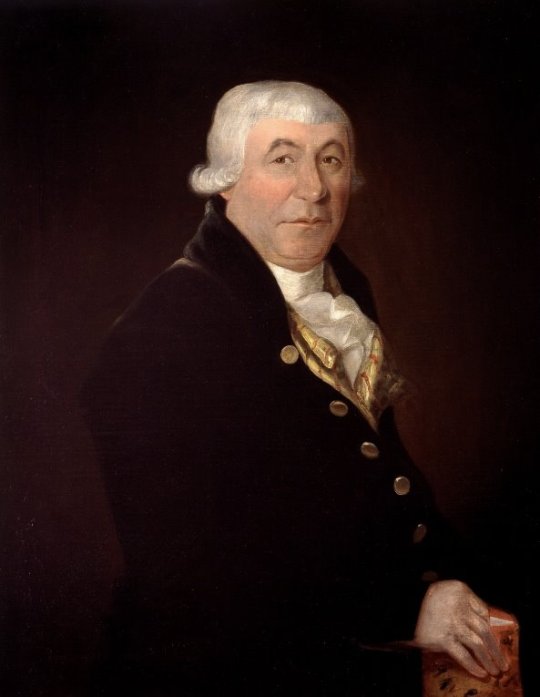
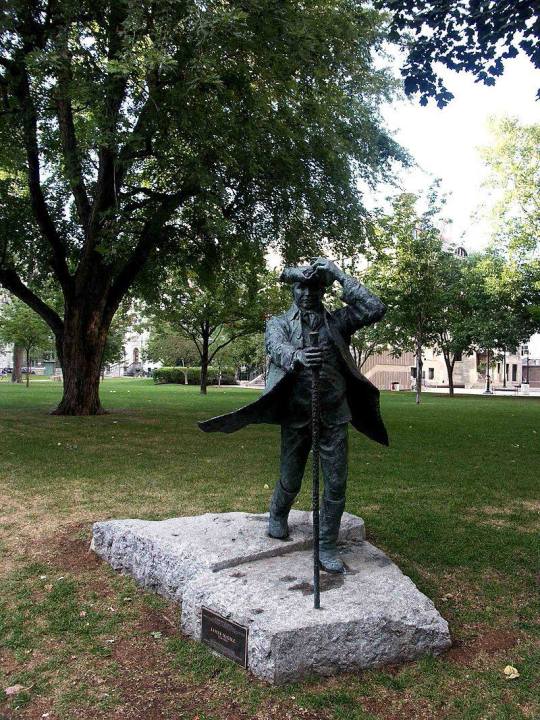
James McGill was born on October 6th, 1744 in Glasgow.
A name most of you will be unfamiliar with but McGill ask any Canadian and they will tell about the man who founded one of their top Universities that bears his name.
During his studies at Glasgow University, McGill was shaped by the values of the Scottish Enlightenment. Although he left university without completing a degree—a fact likely due to his family’s poor fortunes—his education instilled in him a lifelong love of new ideas, and a commitment to give serious thought to the beliefs and opinions of others, no matter how at odds they were with his own worldview.
Sometime before 1766, McGill immigrated to North America and entered the rough-and-tumble world of the fur trade. His hard work and French fluency served him well as he spent much of the following nine years in almost constant danger, navigating the rivers and lakes of the Great Lakes frontier, wintering in unmapped wilderness and living off the land.
By 1775, McGill had established himself as a successful merchant, trading in furs, ammunition and general goods. He said goodbye to bush life and used his fortune to settle in Montreal. There he married an industrious francophone widow, Charlotte, and became stepfather to her young sons.
McGill's dedication to public service distinguished him from many of his fur-trading contemporaries. A volunteer Colonel with the Montreal militia, he led the defence of Montreal during the War of 1812. He served as a city magistrate for many years, making him part of a council that was the de facto government of Montreal at the time. He was also a member of a committee that reported on the need for a Legislative Assembly for the colony of Lower Canada, to which he would be elected three times.
Always a visionary, McGill was determined to create a rigorous system of education for Lower Canada. During his time as a legislator, he participated in the debates that would lead to the establishment of the Royal Institute for the Advancement of Learning (RIAL), a body designed to establish a formal educational system in the colony.
McGill took great care of the welfare of others, including his step-children and the orphan daughter of a friend. This ecumenical and generous spirit manifested itself in his final will, which, after his death in 1813, revealed a bequest to the RIAL for the founding of a college.
Spurred on by the gift, the RIAL became the governing body for McGill College, which was officially established in 1821. McGill College is a regular top performer and is usually in the top 30 universities in the world.
The pics are McGill by Canadian artist Louis Dulongpré and a statue of the man at McGill College's downtown campus in Montreal.
13 notes
·
View notes
Note
Hello,
I hope you are having a wonderful day! Your blog is incredible and seeing it in my feed is often a highlight of my day! 😁
I’m doing some research on Robespierre but am having trouble finding where he lived before he moved in with the Duplays. Do you know where he lived 1780-1792? Thank you so much!!
Thank you so much, so happy to hear you enjoy my posts! 😊😊
Robespierre graduated from Louis-le-Grand on May 15 1781, after which he returned to Arras to work as a lawyer. The Almanach d’Artois for the same year list him as living on Rue du Saumon. It would appear Charlotte left the convent school where she had boarded since 1768 around the same time as her brother and moved into the same house, although I’ve not been able to find an exact date for her departure.
Their stay on Rue du Saumon was short, as the Almanachs from the following two years list Robespierre as living on Rue des Teinturies, with his aunt Henriette and her husband Gabriel Durut (married 1777) instead. It’s likely he and Charlotte were forced to move there out of financial issues.
According to the memoirs of Mauricé-André Gaillard, Charlotte told him in 1794 that their uncle didn’t exactly receive them with open arms when they moved into his house:
You know what a miserable state we found ourselves in, reduced to alms, my brothers and I, if the sister of our father hadn’t taken us in. It’s strange that you didn’t often notice how much her husband’s brusqueness and formality made us pay dearly for the bread he gave us; but you must also have noticed that if indigence saddened us, it never degraded us and you always judged us incapable of containing money through a dubious action.
This could be related to the tension that had undoubtly spread between Maximilien and Henriette and Durut two years earlier, when the two latter demanded he pay them back seven hundred livres that his father had borrowed from Henriette in 1766 and then never returned. It may also explain why Maximilien and Charlotte didn’t just take asylum at their house to begin with in 1780. Durut and Charlotte does however appear to have patched things up, seeing as the former sent the latter money in the months after thermidor in order to help her out.
Charlotte and Maximilien eventually moved again (I can’t find the exact year) to Rue des Jésuites (today Rue du Collége), and finally, in 1787, they moved from there to Rue des Rapporteurs 66 (today rue Maximilien Robespierre).
When Robespierre went to Versailles two years later, he moved into a house on Rue de l’Étang 16, which he shared with three other deputies from Artois — Alexandre François Petit, Célestin Sulpice Fleury and Charles Marie Payen.
When the deputies moved to Paris in October the same year, he instead settled in an apartment on rue de Saintonge 30, under the roof of one M. Humbert. The first time he mentions his new adress is in an undated letter received November 9 1789. Charlotte Robespierre had the following details to give regarding the living place:
Maximilien and a young man from among his friends whom he liked a lot rented a very modest apartment in the rue Saintonge, in the Marais. This young man had occupations which obliged him to leave early in the morning and kept him out very late, so that he and my brother sometimes went several days without seeing each other. Their household was that of two boys who are almost never home, and who eat in restaurants.
Paul Villiers also claimed to have served as Maximilien’s secretary while he lived on this adress.
Finally, in the later half of 1791, Robespierre moved to rue Saint-Honoré 366 (today 398), where he then remained for the rest of his life. The story, as told by Charlotte and Fréron, goes that he took refuge there on the day of the Massacres on Champ-de-Mars (July 17 1791), after which he decided to move in permanentely. However, on August 9 the same year Robespierre still gave his adress as being on 30 rue de Saintonge. One month later, on September 14, when the arrested journalist François Suleau was asked who he wanted to represent him in court, he answered ”M. Robespierre, residing on rue Saintonge,” and got the answer that Robespierre no longer lived there. Robespierre must therefore, at least formally, have moved to rue Saint-Honoré somewhere between those two dates.
14 notes
·
View notes
Photo
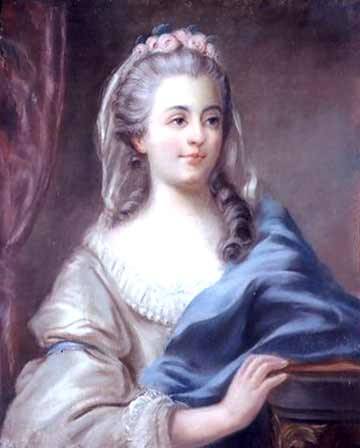
Louise-Françoise Contat (16 June 1760 – 9 March 1813) was a French actress.
She was born in Paris and made her debut at the Comédie Française in 1766 as Atalide in Bajazet. It was in comedy, however, that she made her first success, as Suzanne in Beaumarchais's Mariage de Figaro; and in several minor character parts, which she raised to the first importance, and as the soubrette in the plays of Molière and Pierre de Marivaux, she found opportunities exactly fitted to her talents.
By Louis Marie Jacques Amalric, comte de Narbonne-Lara (17, 23 or 24 August 1755 – 17 November 1813), soldier and diplomat, she had one daughter Louise Amalrique Bathilde Isidore Contat de Narbonne-Lara, born at Saint Pierre de Chaillot, Paris, on 21 September 1788, who married in Paris on 2 December 1811 Dutch Jan Frederik Abbema, born in Amsterdam on 13 June 1773, and had one son Émile, vicomte d' Abbéma, who had an only daughter by his wife Henriette Anne d'Astoin named Louise Abbéma (Étampes, 30 October 1853 – Paris, 4 August 1927).
Bouillet writes of her "She played comedy to perfection and made people remark on the flexibility of her talent, succeeding equally as grandes coquettes and as soubrettes". She was part of the success of the plays of Marivaux and Beaumarchais. She left the theatre in 1808, and in 1809 married de Parny, nephew of the poet Évariste de Parny.
Her sister Marie Émilie Contat (1769–1846), an admirable soubrette, especially as the pert servant drawn by Molière and de Regnard, made her debut in 1784, and retired, in 1815.
#Louise-Françoise Contat#women in history#women on stage#women in theatre#XVIII century#XIX century#people#portrait#paintings#art#arte
3 notes
·
View notes
Text
Composition of the French Army at the Battle of Austerlitz
The French forces numbered 73000 men.
The Emperor, Napoléon I, Commander-in-chief
Berthier, Major General
I Corps, Marshal Bernadotte
1st Division, Rivaud (Brigades: Dumoulin, Pacthod). Rivaud, born the 10 February 1766 from a family of magistrats in Poitou, fought in Jemappes, Neerwinden, Hondschoote, distinguished himself in Montebello and Marengo.
2d Division, Drouet d’Erlon (Brigades: Frère, Werlé). Born in Reims the 29 of July 1765, in a family of craftsmen, was a volunteer in 1792; he was aide-de-camp to Général Lefebvre.
Division of Light Cavalry, Kellermann (Brigades: Marizy, Picard). Son of Marshal Kellermann, born in Metz on August 4, 1770, and fought in Arcole, Rivoli and Marengo.

III Corps, Marshal Davout
1st Division, Caffarelli, temporarily assigned to V Corps (Brigades:Eppler, Demont, De Billy) . Born on October 1766, in a noble family of Languedoc, he has four brothers who will have brilliant careers. He was part of the Army of the Pyrénées, the Sambre-et-Meuse Army, and fought in Marengo.
2d Division, Friant (Brigades: Heudelet, Kister, Lochet). Son of a craftsman and trader, born on September 18, 1758, in Picardy, Friant fought in Fleurus, Maastricht, the Pyramids, before standing out in Austerlitz where he had three horses killed under him; he had arrived on forced march and kept up with the austrian army pushing on him. His contribution to the victory of Austerlitz was major.
Division of Dragoons, Bourcier. Born in Alsace on February 21, 1760, fought in the siege of Mayence, the siege of Kehl, and in Elchingen.
Brigade of Light Cavalry, Margaron. Born on May 1st, 1765 in Lyon, fought in Novi and Marengo.

IV Corps, Marshal Soult
1st Division, Saint-Hilaire (Brigades: Morand, Thiébault, Varé). Born September 4, 1766, in the Aisne, son of a cavalry captain, he fought in the Antilles, was in the siege of Toulon, in Castiglione, Lodi. He stood out in Austerlitz when taking the Pratzen Heights with Vandamme. He was wounded during the battle.
2d Division, Vandamme (Brigades: Schiner, Savetier de Candras, Ferey). Born in the North the 5 November 1770, son of a surgeon, fought in the Antilles, in Hondschoote, Ypres, and was remarked in Austerlitz.
3rd Division, Legrand (Brigades: Merle, Levasseur). Born on February 23 in the Oise, he fought in Vendée, in Fleurus, Hohenlinden, Hollabrunn. In Austerlitz he held up in Telnitz and Sokolnitz for ten hours against the left wing of the Russian army, made 3000 prisoners and took twelve cannons.

V Corps, Marshal Lannes
3rd Division, Suchet (Brigades: Claparède, Beker, Valhubert). Son of a silk trader, Suchet was born in Lyon on March 2, 1770. He had a good instruction. He was in the siege of Toulon and took British general Charles O’Hara prisoner. He fought in Lodi, Castiglione, Arcole, Rivoli, and married a daughter of a Clary lady, and was close to Napoleon by alliance. At Austerlitz, his division, at the far left of the French army, faces Bagration. On the evening of the battle, Napoleon invites him to his table.
Division of the Reserve Grenadiers, Oudinot and Duroc (Brigades: Laplanche-Morthières, Dupas, Ruffin). Oudinot, born in Bar-le-Duc on April 25, 1767, from the lower bourgeoisie, fought in Zurich and in Italy, before organizing in Lannes’ Corps the famous column of the Oudinot Grenadiers. He took Vienna and was wounded in Hollabrunn, which didn’t stop him from taking his part in Austerlitz. Duroc, born in Pont-à-Mousson on October 25, 1770, from a noble family originating from Gévaudan, was Napoleon’s aide-de-camp in Marengo, and often sent to diplomatic missions.

Imperial Guard, Marshal Bessières
Commanding the Infantry, Soulès. Born on August 24, 1760, in Lectoure, he began as a simple soldier, fought in Dego, Castiglione, Arcole, and stood out in Marengo. He became a Brigade General in 1804.
Commanding the Cavalry, Ordener, born in Lorraine on September 2, 1755, a native speaker of Platt, was the one ordered to arrest the Duke of Enghien, but he didn’t take part in the trial and execution of the young prince. He was very good in Austerlitz.

Cavalry Reserve, Marshal Murat
1st Division of Cavalry, Nansouty (Brigades: Piston, La Houssaye, Saint-Germain). Nansouty, born in Bordeaux on May 30, 1768, from Burgundian nobility, fought on the Rhine, in Hohenlinden, and was a Division General in 1803.
2d Division of Cavalry, d’Hautpoul (Brigades: Saint-Sulpice, Fontaine). Of old Languedocian nobility, tall, with a powerful voice, d’Hautpoul fought in Fleurus, Biberach, Hohenlinden. At Austerlitz, his cavalry charge crushed the russian center on the Pratzen Heights.
2d Dragoon Division, Walther (Brigades: Sébastiani, Roget, Boussart, and Brigade of Light Cavalry Milhaud). Son of a lutheran pastor, born in Alsace on August 20, 1761, enlisted in 1781 and was rapidly General. He was famed as a cavalryman. He fought in Jemappes, Neerwinden, Zurich, Hohenlinden, and was wounded in the battle of Austerlitz.
3rd Dragoon Division, Boyé (replacing Beaumont, who was ill) (Brigades: Boyé, Scalfort, and Light Cavalry Brigade, Treillard). Born in the Electorate of Trèves (in Germany) on February 11, 1762, he fought in Neerwinden, Hondschoote, Fleurus, Zurich, and Biberach.

[Sorry, I couldn’t find a portrait of General Boyé.]
General Direction of the Artillery, Faultrier.
Sources:
Alain Pigeard, Histoire de la Grande Armée
Various Wikipedia articles
#napoleonic#battle of austerlitz#focus on#the generals#généraux de division de la grande armée#alain pigeard#histoire de la grande armée
33 notes
·
View notes
Photo

Oranda Fune no zu -Depiction of a Dutch Ship, Japan, Kansei 4, 2nd month, 9th day, 30 March 1792 by anonymous - possibly the VOC ship Landskroon
A very large and extremely detailed Japanese drawing on rice paper of a Dutch ship at the artificial island Deshima, the VOC's outpost in Nagasaki harbour. The Japanese texts do not identify the ship, but note that it was at Deshima on Meiwa 3, 10th month, 18th day, which is in October or November 1766, probably 21 October. The VOC ship database records only one ship at Deshima in 1766: the Landskroon, which arrived from Batavia on 13 August 1766 and departed for Batavia on 8 November 1766.
53 notes
·
View notes
Photo










Thomas Gainsborough’s portraits of George III, Queen Charlotte and 13/15 of their children, 1782. Prince Frederick (1763 - 1827) is not included in the set for unknown reasons, while Princess Amelia (1783 - 1810) was born a year after the portraits.
“They were painted at Windsor in September and October 1782. On 30 October the Morning Herald reported that Gainsborough ‘has just completed his painting of the whole Royal Family, at Windsor... all of which are spoken of as highly-finished characteristic portraits of the illustrious personages who sat to him’. All the portraits were exhibited at the Royal Academy in 1783.“
- The Royal Collection Trust
1: George III (1738 - 1820)
2: Queen Charlotte (1744 - 1818)
3: George, Prince of Wales (1762 - 1830)
4: Prince William (1765 - 1837)
5: Charlotte, Princess Royal (1766 - 1828)
6: Prince Edward (1867 - 1820)
7: Princess Augusta (1768 - 1840)
8: Princess Elizabeth (1770 - 1840)
9: Prince Ernest (1771 - 1851)
10: Prince Augustus (1773 - 1843)
11: Prince Adolphus (1774 - 1850)
12: Princess Mary (1776 - 1857)
13: Princess Sophia (1777 - 1848)
14: Prince Octavius (1779 - 1783)
15: Prince Alfred (1780 - 1782)
#george iii#queen charlotte#king george iii#george iv#william iv#charlotte princess royal#edward duke of kent#princess augusta#princess elizabeth#ernest augustus of hanover#adolphus duke of cambridge#princess mary#princess sophia#prince octavius#prince alfred#1782#1780s#1700s#thomas gainsborough
203 notes
·
View notes
Text
Maria Sofia Isabel de Neuburgo, Queen of Portugal (Wife of King Pedro II of Portugal)
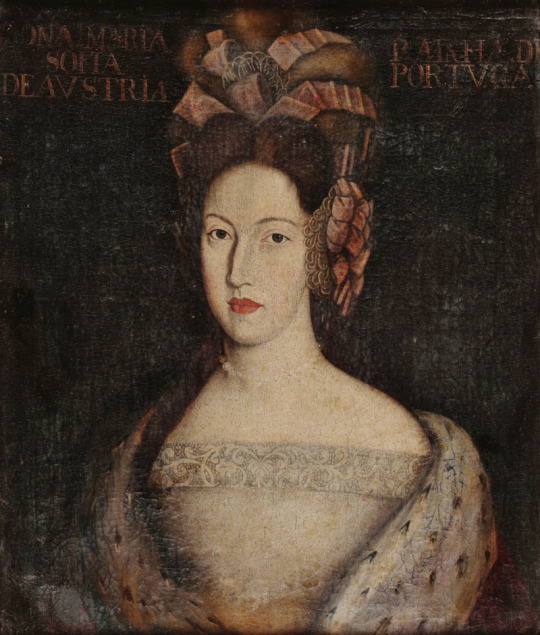
Reign: 11 August 1687 – 4 August 1699
Maria Sophia Elisabeth of Neuburg (6 August 1666 in Palácio Benrath – 4 August 1699 in Lisbon ) was queen of Portugal as the wife of King Pedro II from 1687 until her death in 1699. A popular queen, she was noted for her extraordinary generosity and for being the mother of the famously extravagant João V of Portugal.
Maria Sophia was born at the Schloss Benrath
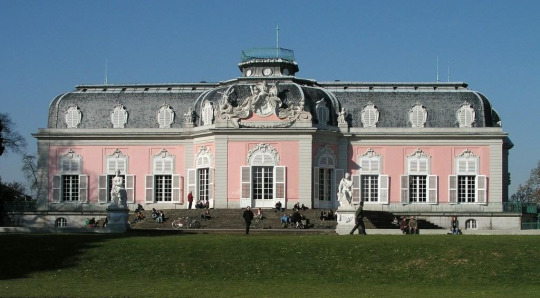
outside Düsseldorf in what is now Germany. Her father Philip William

was the reigning Count Palatine of Neuburg. In 1685 he became Elector Palatine following the death of his cousin Charles II,
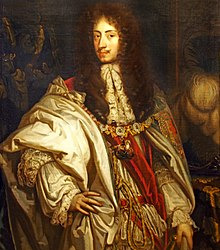
an inheritance that greatly increased the family's status within Europe. In December 1676, Maria Sophia's sister Eleonore Magdalene

was married to Holy Roman Emperor Leopold I
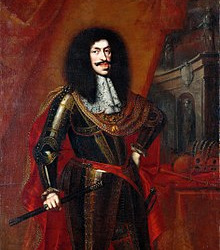
owing to the family's reputation as producing fertile women. After two marriages, Leopold had no living male heirs. The new Empress Eleonore Magdalene fulfilled her function and quickly mothered two future Holy Roman Emperors (Joseph I
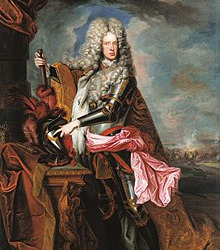
and Charles VI).

A similar succession crisis was occurring in Portugal. Isabel Luísa, Princess of Beira, heiress to the throne and only daughter of King Pedro II, was childless and had been refused by most European sovereigns due to her sickly nature and strict Portuguese succession rights. As a result, the Portuguese ambassador Manuel da Silva Teles was sent to Heidelberg to ask for the hand of Maria Sophia, with the encouragement of Empress Eleonore Magdalene. The embassy left Lisbon on 8 December 1686 and the marriage contract was signed on 22 May 1687. A dowry of 100,000 florins was agreed on.
Following her proxy marriage on 2 July 1687 in Heidelberg, Maria Sophia left her native Germany the following August. She traveled up the Rhine to receive the honours of all courts along the river. At Brila, Maria Sophia embarked on an English yacht that was put at her disposal by order of James II of England.
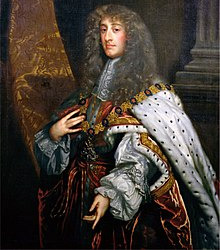
She was accompanied by an English fleet that traveled to Plymouth with the Duke of Grafton, son of the late Charles II of England. The new queen arrived in Lisbon 12 August 1687 amid great celebration and the same day the couple was formally married by the Archbishop of Lisbon at Ribeira Palace. Supposedly Louis XIV was "greatly chagrined" by Pedro's decision to marry a daughter of the Elector Palatine and not a French princess, as he had hoped.
The young queen quickly gained the affection of her stepdaughter Isabel Luísa, who was herself only three years younger than Maria Sophia. She was also loved by her husband, who was quickly presented with a son the year after his marriage. The son survived only three weeks, but a year later, Maria Sophia had another son who would succeed his father as João V of Portugal. As an adult, he would marry his first cousin Maria Anna of Austria, daughter of Empress Eleonore Magdalene.
Maria Sophia was described as gentle, and Pedro reportedly treated her with respect. While she clashed with her widowed sister-in-law Catarina of Bragança on matters of etiquette, she was described as a popular queen who was decidedly generous and set about helping the poor of Lisbon. Her pious nature also made her a popular queen. She was frequently involved with charities that supported widows and orphans and allowed poor patients access to medical care at the royal palace. She had a very intimate friendship with Father Bartolomeu do Quental,

who died with the reputation of a saint. In Beja, she financed the foundation of a Franciscan school. She died in Lisbon of fever, possibly a symptom of erysipelas, on 4 August 1699, two days before her thirty-third birthday. Her body was laid to rest at the Monastery of São Vicente de Fora in Lisbon.
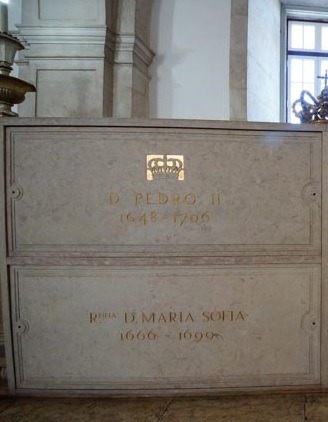
She had 7 children with King Pedro II:
João (30 August 1688 – 17 September 1688) Prince of Brazil and 12th Duke of Bragança, lived eighteen days.

João (22 October 1689 – 31 July 1750) Prince of Brazil from 1697; and King of Portugal. Married Maria Anna of Austria, and had issue.
Francisco (25 May 1691 – 21 July 1742) Duke of Beja, died unmarried with illegitimate issue.

Antonio (15 March 1695 – 20 October 1757) Died unmarried and childless.
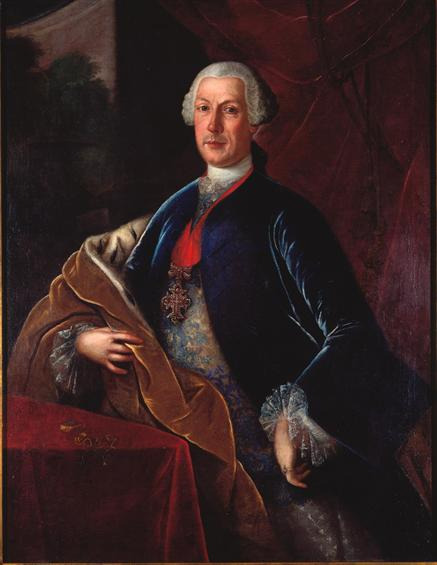
Teresa Maria (24 February 1696 – 16 February 1704) Died in childhood.
Manuel (3 August 1697 – 3 August 1766) Count of Ourém, died unmarried.
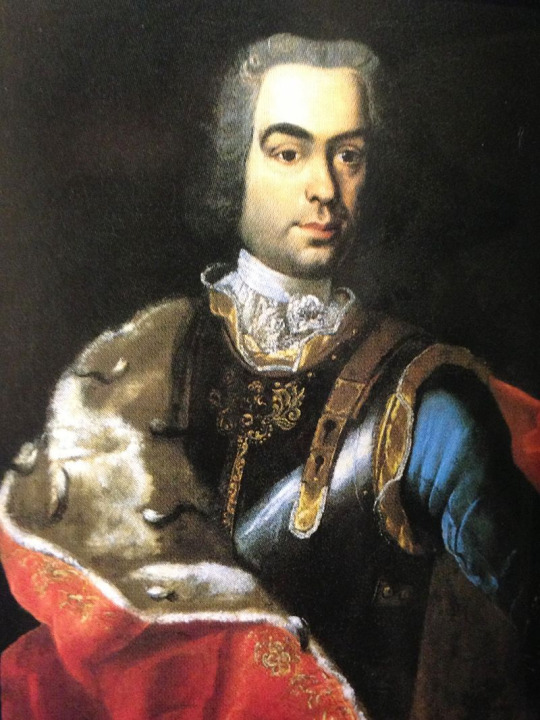
Francisca Josefa (30 January 1699 – 15 July 1736) Died unmarried and childless.

5 notes
·
View notes
Text
Right to Information (RTI) Act, 2005: A Critical Analysis

This article on 'Right to Information (RTI) Act, 2005: A Critical Analysis' was written by an intern at Legal Upanishad.
Introduction
The Right to Information Act, of 2005 in India specifically grants citizens the right to request information from public authorities and obligates them to provide the information within a specified timeframe. The right to information helps citizens make informed decisions and hold public officials accountable for their actions. In this article, we will analyze the Right to Information (RTI) Act, of 2005, which is an important legislation in India. We will examine the aims of the act, including promoting transparency and accountability in the government and public institutions, and discuss the potential benefits and criticisms of the act. We will also look at some of the challenges faced in implementing the act, including concerns about misuse and reluctance to provide information and discuss the need for greater transparency in private institutions.
Historical Perspective of the Right to Information
The concept of the right to information can be traced back to the Swedish Parliament, which passed the Freedom of the Press Act in 1766, giving citizens the right to access public documents. In the 20th century, the right to information became an important issue for the democratic movement, particularly in developing countries. The right to information was seen as a tool to combat corruption, promote transparency, and increase citizen participation in governance. In India, the demand for the right to information began in the 1970s and 1980s, when activists and civil society organizations campaigned for greater transparency in government decision-making. The demand for the right to information gained momentum in the 1990s, with the establishment of the Mazdoor Kisan Shakti Sangathan (MKSS), a grassroots organization that campaigned for the right to information in Rajasthan. The MKSS’s campaign led to the enactment of the Rajasthan Right to Information Act in 2000, which was the first law in India to grant citizens the right to access information held by public authorities. This inspired other states to enact similar laws, leading to the enactment of the national Right to Information Act, of 2005.
Critical Analysis of the RTI Act, 2005
The Right to Information Act, of 2005 was passed by the Indian Parliament on 15 June 2005 and came into force on 12 October 2005. The act under section 3, provides citizens with the right to access information held by public authorities. Section 4 of the Act obligates them to provide the information proactively on websites about their role, powers, duties, etc. within a specified timeframe of 30 days as provisioned under section 7 of the Act. The act has been widely lauded for its potential to increase transparency and accountability in the government and public institutions in India. The Right to Information Act, 2005, provides the citizens with the right to request information which includes policies, decisions, and activities of public authorities subject to certain exemptions to protect the sovereignty, integrity, strategic interests of the State, etc. under section 8 of the Act. The act also aims to promote a culture of openness and transparency in the government and public institutions. Section 9 provides certain grounds for rejection of a request, if it is vague, frivolous, or if it seeks information that is exempt under the Act such as a violation of copyright. The Act also allows a person to appeal to a higher authority if their request for information has been rejected or if they are not satisfied with the information as a ground for appeal under section 19 of the Act. These are some of the important sections of the RTI Act, which empower citizens to access information held by public authorities and promote transparency and accountability in governance.

Right to Information (RTI) Act, 2005
Criticisms of the RTI Act
Despite its many benefits, the RTI Act has faced some criticism since its enactment in 2005. Some of the criticisms are: - Limited access to information: Although the RTI Act allows citizens to access information held by public authorities, it does not extend to private bodies. Additionally, certain types of sensitive information, such as national security-related information or information that could impede an ongoing investigation, are exempted from disclosure. In the case of Saurav Yadav v. Union of India (2021): The Delhi High Court held that even when an investigation is ongoing, the information sought under the RTI Act cannot be denied on the ground of investigation or pendency of a case. The public authority has to provide reasons for denying the information under the RTI Act. - Misuse of the Act: Some critics argue that the RTI Act is being misused by individuals or organizations for purposes other than the promotion of transparency and accountability, such as for blackmail, harassment, or settling personal scores. The misuse of the Act can lead to excessive burden on public authorities, delay in providing information, and can adversely impact the effectiveness of the Act. As in the case of Venkatesh Nayak v. Central Information Commission (2020): The Bombay High Court held that under Section 7(1) of the RTI Act, if a public authority fails to provide information within the prescribed time, the applicant has the right to approach the first appellate authority, and such an appeal cannot be dismissed on the ground of delay in filing. - Inadequate implementation: Despite the enactment of the RTI Act, there are still many public authorities that are not fully compliant with its provisions. There have been instances where public authorities have refused to provide information or have provided incomplete information. Moreover, there have been reports of harassment and even violence against activists who have sought information under the RTI Act. - Lack of awareness: Despite the RTI Act being in force for over a decade, there is still a lack of awareness among the general public about their right to access information under the Act. Many citizens are not aware of the procedure for filing an RTI application, the fees charged for obtaining information, and the exemptions that apply. In the case of Central Information Commission v. High Court of Delhi (2021): The Supreme Court held that the RTI Act does not give citizens the right to seek information regarding judicial proceedings, which includes information related to judicial orders, judicial records, and court proceedings. However, citizens can still seek information related to administrative matters of the courts, such as recruitment and transfers of employees. - Lack of clarity in exemptions: The exemptions under the RTI Act are broad and open to interpretation. As a result, there have been instances where public authorities have denied access to information that should have been made available to citizens. The lack of clarity in exemptions can also lead to inconsistent application of the Act. This can be illustrated by the recent judgment in the case of Param Bir Singh v. State of Maharashtra (2021): The Bombay High Court held that even if the information sought under the RTI Act is related to the personal affairs of a public servant, it may still be disclosed if it serves a larger public interest and does not fall under the exemptions provided under the RTI Act.
Suggestions
- Increase awareness: There is a need to increase awareness among the general public about their right to access information under the RTI Act. This can be done through campaigns, workshops, and training programs. - Simplify the process: The process for filing an RTI application can be simplified by making it more user-friendly. This can include making the forms available in multiple languages and online submission of applications. - Strengthen whistle-blower protection: There is a need to strengthen the protection of whistle-blowers who provide information under the RTI Act. This can be done by providing them with legal and institutional support to prevent victimization. - Increase capacity: Public authorities should be provided with the necessary resources and capacity building to effectively implement the RTI Act. This can include training programs for officials and making available adequate infrastructure for processing and disseminating information.
Conclusion
In conclusion, the Right to Information (RTI) Act, of 2005 has been an important step toward promoting transparency and accountability in governance in India. The Act has empowered citizens to access information held by public authorities and has led to greater public participation in governance. However, the RTI Act has also faced some criticism, including limited access to information, misuse of the Act, inadequate implementation, lack of awareness, and lack of clarity in exemptions. Overall, the RTI Act has been a positive development in promoting transparency and accountability in governance. However, there is still room for improvement to ensure that the Act is implemented effectively and to its fullest potential. The government and civil society must continue to work together to strengthen the Act and ensure that it is used to promote the greater public good.
References
- https://progressive.international/members/cc70b9ce-cbd6-4c3e-a80d-657c37c8525b-mazdoor-kisan-shakti-sangathan/en - https://indiankanoon.org/doc/1053993/ Read the full article
0 notes
Text
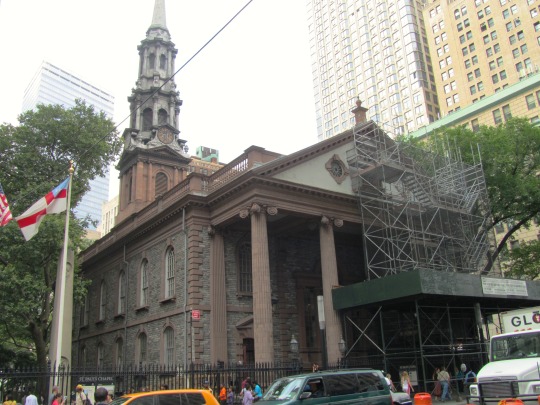
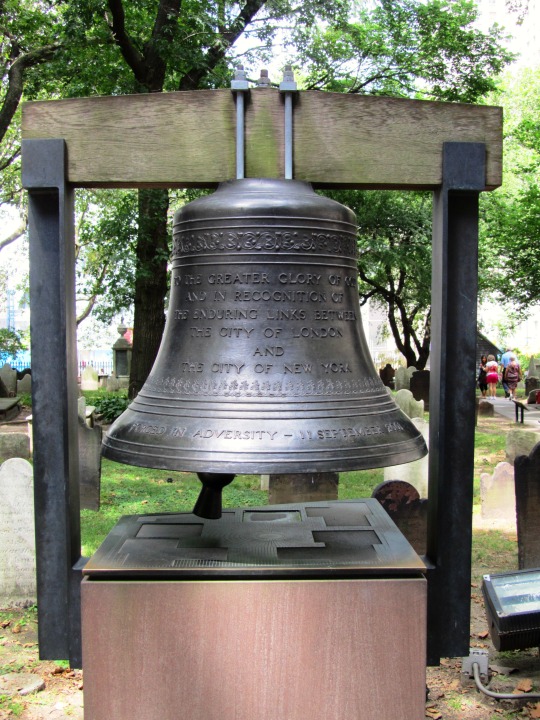
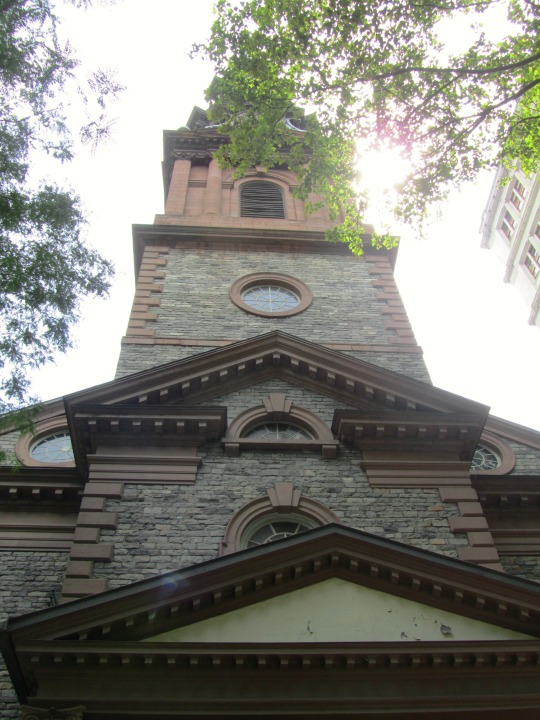

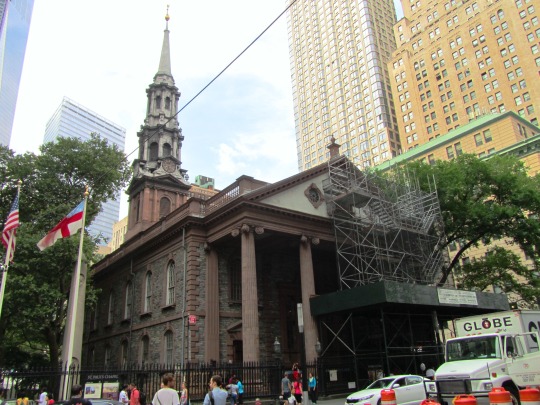



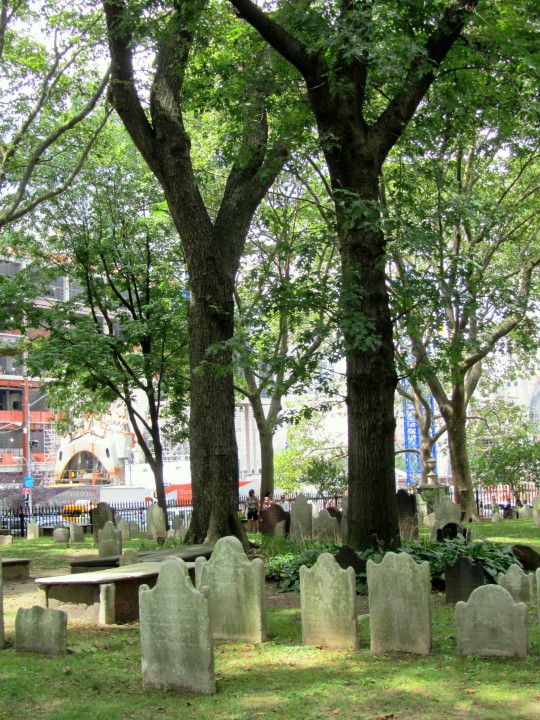



The St. Paul’s Chapel in New York City was consecrated on October 30, 1766.
#St. Paul’s Chapel#consecrated#30 October 1766#Lower Manhattan#travel#summer 2013#2009#New York City#architecture#Thomas McBean#USA#Peter Harrison#Georgian#interior#exterior#original photography#vacation#cityscape#organ#209 Broadway#The Little Chapel That Stood#bell#One World Trade Center#tourist attraction#landmark#cemetery#US history#anniversary
0 notes
Text
Hello everyone,today we have a lighter topic on our hands,as always machine translation is at the bottom and the collective is on telegram
⚠️ XI JINPING VISITA LE ROVINE DI YIN, ANTICA CAPITALE DELLA CINA SETTENTRIONALE AI TEMPI DELLA DINASTIA SHANG ⚠️
🇨🇳 Oggi, 30 ottobre, Xi Jinping - Segretario Generale del Partito Comunista Cinese - ha visitato le Rovine di Yin, un Sito Archeologico della Città di Anyang, nella Provincia dell'Henan, Capitale della Cina Settentrionale nell'Età del Bronzo durante la Dinastia Shang.
⭐️ Il 27 ottobre, Xi Jinping, insieme ai nuovi membri del Comitato Permanente, si era recato a Yan'an, a visitare una base rivoluzionaria, l'ex Residenza di Mao Zedong durante il Periodo della Rivoluzione, e il Sito del 7° Congresso Nazionale del Partito Comunista Cinese, dove venne elaborata la linea della mobilitazione delle forze popolari per sconfiggere gli aggressori giapponesi, liberare la Nazione ed edificare una Nuova Cina.
⛩ Oggi, invece, si è recato in un luogo dell'Antica Cina, che risale ai tempi della Dinastia Shang, che ha governato dal 1766 AC al 1050 AC.
🏺He Yuling, Ricercatore presso l'Istituto di Archeologia dell'Accademia Cinese delle Scienze Sociali, ha accompagnato il Segretario Generale durante la visita, narrando la Storia della Dinastia Shang.
🐉 Xi Jinping ha posto l'attenzione sui meravigliosi bronzi dell'Antica Cina, sui primi caratteri della Lingua Cinese e sullo scambio e fusione della Civiltà e della Cultura del periodo.
🧧 Li Xiaoyang, Direttore dell'Ufficio per le Reliquie Culturali di Anyang, ha dichiarato che Xi Jinping ha sottolineato l'importanza della Protezione e della Ricerca nel luogo, soffermandosi sull'antica nascita dei Caratteri Cinesi, in quanto "Cuore della nostra Civiltà Multi-Etnica e Unificata, tramandata di generazione in generazione fino al giorno d'oggi" 🏮
🐲 Shen Weiwei, Segretario del Ramo del Partito Comunista della Gestione delle Rovine Yin di Anyang, ha dichiarato che la Cina dovrebbe continuare ad ereditare e diffondere la sua Civiltà e Cultura millenaria, rendendola più accessibile per il mondo.
📖 Per prima cosa, il Governo Locale di Anyang si occuperà di facilitare la comprensione degli Antichi Caratteri della Lingua Cinese per i bambini delle scuole che verranno in visita, permettendo loro di conoscere e comprendere al meglio la Civiltà e la Cultura della Cina dell'Età del Bronzo.
💬 "Come archeologo - afferma He Yuling - è un grande onore poter condurre ricerche nelle Rovine di Yin, perché l'Archeologia Cinese ha avuto proprio origine qui, è la culla dell'Archeologia della Cina e sono onorato di poter portare avanti gli sforzi dei miei predecessori" 🧱
🧾 Fonte
🌸 Iscriviti 👉 @collettivoshaoshan
⚠️ XI JINPING VISITS THE RUINS OF YIN, ANCIENT CAPITAL OF NORTHERN CHINA AT THE TIME OF THE SHANG DYNASTY ⚠️
🇨🇳 Today, October 30, Xi Jinping - General Secretary of the Communist Party of China - visited the Ruins of Yin, an Archaeological Site in the city of Anyang, in Henan Province, the capital of Northern China in the Bronze Age during the Dynasty. Shang.
⭐️ On October 27, Xi Jinping, along with the new members of the Standing Committee, went to Yan'an, to visit a revolutionary base, the former residence of Mao Zedong during the Revolution Period, and the Site of the 7th Congress. National Communist Party of China, where the line of mobilization of popular forces was drawn up to defeat the Japanese aggressors, liberate the Nation and build a New China.
⛩ Today, however, he went to a place in Ancient China, which dates back to the times of the Shang Dynasty, which ruled from 1766 BC to 1050 BC.
🏺He Yuling, Researcher at the Institute of Archeology of the Chinese Academy of Social Sciences, accompanied the Secretary General during the visit, narrating the History of the Shang Dynasty.
🐉 Xi Jinping focused on the marvelous bronzes of Ancient China, on the first characters of the Chinese language and on the exchange and fusion of the Civilization and Culture of the period.
🧧 Li Xiaoyang, Director of the Anyang Cultural Relics Office, said that Xi Jinping stressed the importance of Protection and Research in the place, focusing on the ancient birth of Chinese characters, as "Heart of our Multi Civilization. -Ethnic and Unified, handed down from generation to generation until today "🏮
🐲 Shen Weiwei, Communist Party Branch Secretary of Anyang Yin Ruin Management, stated that China should continue to inherit and spread its millennial civilization and culture, making it more accessible to the world.
📖 First, Anyang Local Government will take care of facilitating the understanding of the Ancient Characters of the Chinese Language for visiting school children, allowing them to better know and understand the Chinese Civilization and Culture of the Age. of the Bronze Age.
💬 "As an archaeologist - says He Yuling - it is a great honor to be able to conduct research in the Ruins of Yin, because Chinese Archeology originated here, it is the cradle of China's archeology and I am honored to be able to carry on the efforts of my predecessors "🧱
🧾 Source
🌸 Subscribe 👉 @collectivoshaoshan
#socialism#china#italian#china news#translated#xi jinping#communism#archeology#ruins of yin#ancient ruins#collettivoshaoshan
0 notes
Photo


James McGill was born on October 6th, 1744 in Glasgow.
A name most of Scots will be unfamiliar with but McGill ask any Canadian and they will tell about the man who founded one of their top Universities that bears his name, or College as they call them in North America.
During his studies at Glasgow University, McGill was shaped by the values of the Scottish Enlightenment. Although he left university without completing a degree—a fact likely due to his family’s poor fortunes—his education instilled in him a lifelong love of new ideas, and a commitment to give serious thought to the beliefs and opinions of others, no matter how at odds they were with his own worldview.
Sometime before 1766, McGill immigrated to North America and entered the rough-and-tumble world of the fur trade. His hard work and French fluency served him well as he spent much of the following nine years in almost constant danger, navigating the rivers and lakes of the Great Lakes frontier, wintering in unmapped wilderness and living off the land.
By 1775, McGill had established himself as a successful merchant, trading in furs, ammunition and general goods. He said goodbye to bush life and used his fortune to settle in Montreal. There he married an industrious francophone widow, Charlotte, and became stepfather to her young sons.
McGill’s dedication to public service distinguished him from many of his fur-trading contemporaries. A volunteer Colonel with the Montreal militia, he led the defence of Montreal during the War of 1812. He served as a city magistrate for many years, making him part of a council that was the de facto government of Montreal at the time. He was also a member of a committee that reported on the need for a Legislative Assembly for the colony of Lower Canada, to which he would be elected three times.
Always a visionary, McGill was determined to create a rigorous system of education for Lower Canada. During his time as a legislator, he participated in the debates that would lead to the establishment of the Royal Institute for the Advancement of Learning (RIAL), a body designed to establish a formal educational system in the colony.
McGill took great care of the welfare of others, including his step-children and the orphan daughter of a friend. This ecumenical and generous spirit manifested itself in his final will, which, after his death in 1813, revealed a bequest to the RIAL for the founding of a college.
Spurred on by the gift, the RIAL became the governing body for McGill College, which was officially established in 1821. McGill College is a regular top performer and is usually in the top 30 universities in the world.
Previously I have been accused of “whitewashing my historical posts by an anon (aren’t they all?). McGill has some history of dealing in the slave trade, and while he wasn’t a prolific owner from what I can gather, he enslaved both Black and Indigenous people. I make no excuses for him, but I will point out that he did sign a report advocating for the abolition of slavery in 1787 however when the House of Assembly of Lower Canada introduced an abolition bill in 1793, McGill – a member of the House – voted in favour of maintaining slavery, so he was a man of contraries. You can read more on this at the link below
The pics are McGill by Canadian artist Louis Dulongpré and a statue of the man at McGill College’s downtown campus in Montreal.
https://montreal.ctvnews.ca/researchers-piece-together-the-lives-of-people-enslaved-by-james-mcgill-1.5041825
24 notes
·
View notes
Text
10月4日(火) 19:00 内幸町Amazing Space TEL : 03-6206-1766 [email protected] 小泉明子 (Pf/Vo) Tony Guppy (Steelpan) 平松加奈 (Violin) 10月7日(金)19:30 東京用賀 キンのツボ TEL: 03-3707-0346 E-MAIL: [email protected] Guppy (Steelpan) Gio Guido ( Guitar) https://t.co/GYkPV8xayi
● 10月4日(火) 19:00 ●内幸町Amazing Space TEL : 03-6206-1766 [email protected] 小泉明子 (Pf/Vo) Tony Guppy (Steelpan) 平松加奈 (Violin) ●10月7日(金)19:30 ● 東京用賀 キンのツボ TEL: 03-3707-0346 E-MAIL: [email protected] Guppy (Steelpan) Gio Guido ( Guitar) https://t.co/GYkPV8xayi — GUPPY (トニー・グッピー) (@TonyGuppy) Oct 2, 2022 October 02, 2022 at 10:37PM via Twitter https://twitter.com/TonyGuppy
0 notes
Text
James Madison

James Madison was born on March 16, 1751 in Port Conway, Virginia Colony, British America. His parents were James Madison Sr. [1723-1801] and Eleanor Rose "Nelly" Conway [1731-1829]. He had eleven [11] siblings: Francis Taylor Madison [1753-1800], Ambrose Madison [1755-1793], Catlett Madison [February 10 - March 18, 1758], Nelly Conway Madison [1760-1802], William Taylor Madison [1762-1802], Sarah Catlett Madison [1764-1843], unnamed brother [1766], Elizabeth Madison [1768-1775], unnamed brother [1770], Reuben Madison [1771-1775] and Frances Taylor Madison [1774-1823].
In 1794 he married Dolley Todd [1768-1849]. James Madison never had a biological child, but he did have a stepson, John Payne Todd [1792-1852].
James Madison was the 4th President of the United States [March 04, 1809 - March 04, 1812], the 5th United States Secretary of State [May 02, 1801 - March 03, 1809] and a Founding Father. He was a co-founder of the Democratic-Republican Party.
He held two [2] other offices. The first as a Delegate from Virginia to the Congress of the Confederation [November 06, 1786 - October 30, 1787]. The second as a Member of the U.S. House of Representatives from Virginia [March 04, 1789 - March 04, 1797].
He served in the Virginia Militia in 1775 where he was a Colonel.
He died on June 28, 1836 (aged 85) in Montpelier, Virginia, U.S.. The cause of death was congestive heart failure. He was laid to rest at Montpelier, Virginia, U.S. 38°13'07.5"N 78°10'06.0"W.
#president#founding fathers#sec state#secretary of state#history#military#office#personal life#james madison#american history
1 note
·
View note
Photo

On This Day In Royal History . 5 October 1828 . 👑 Charlotte, Princess Royal died at Ludwigsburg Palace . . ◾ Princess Charlotte was born on 29 September 1766 at Buckingham House, London. Her parents were King George III & Queen Charlotte of Mecklenburg-Strelitz. She was christened on 27 October 1766 at St James’s Palace. . ◾ Charlotte was officially designated as Princess Royal on 22 June 1789. . ◾ Like her siblings, the Princess Royal was educated by private tutors & spent most her childhood at Buckingham Palace, Kew Palace, & Windsor Castle, where her wet nurse was Frances wife of James Muttlebury. . ◾ On 18 May 1797, the Princess Royal was married at the Chapel Royal, St. James’s Palace, London to The Hereditary Prince Frederick of Württemberg. Charlotte was later Queen consort of Württemberg from 1 January 1806 – 30 October 1816. . ◾ The marriage between Duke Frederick & the Princess Royal produced one child: sadly, a stillborn daughter on 27 April 1798. . ◾ The Princess Royal was a godmother (by proxy) at the christening of her niece, Princess Victoria of Kent (the future Queen Victoria), in 1819. . ◾ In 1827, she returned to Britain for the first time since her wedding in 1797 in order to have surgery for dropsy. . ◾ She died at Ludwigsburg Palace the following year and is buried there in the royal vault. . . . #OnThisDayInHistory #ThisDayInHistory #TheYear1828 #PrincessCharlotte #PrincessRoyal #HouseofHanover #Royalty #History #QueenofWürttemberg #BritishMonarchy #QueenCharlotte #D5Oct #otd #OnThisDay #Thisday #Monarchy #historyinpictures #RoyalHistory #Georgians #princess #thequeen #Württemberg #Artwork #portraitpainting #LudwigsburgPalace (at Ludwigsburg, Germany) https://www.instagram.com/p/CF-giJtDDr_/?igshid=4i2ikl8muqc4
#onthisdayinhistory#thisdayinhistory#theyear1828#princesscharlotte#princessroyal#houseofhanover#royalty#history#queenofwürttemberg#britishmonarchy#queencharlotte#d5oct#otd#onthisday#thisday#monarchy#historyinpictures#royalhistory#georgians#princess#thequeen#württemberg#artwork#portraitpainting#ludwigsburgpalace
0 notes